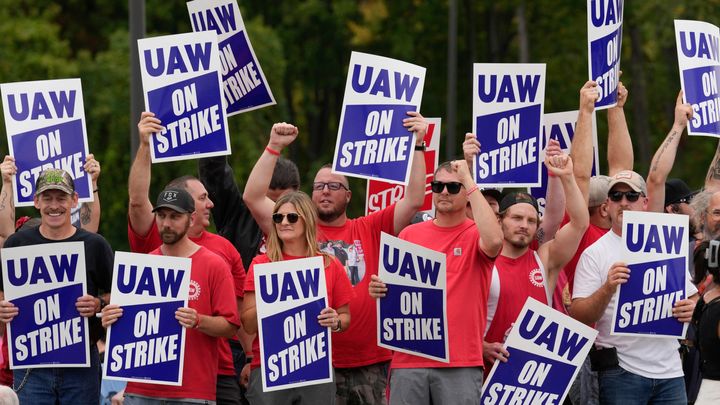Number Of Striking U.S. Workers More Than Doubled In 2023
If it feels like a lot of workers are going out on strike these days, that’s because they are, according to a new report from Cornell University and the University of Illinois Urbana-Champaign.
The number of U.S. workers involved in work stoppages more than doubled last year, rising from 224,000 to 539,000, the universities’ Labor Action Tracker found. That amounted to a 141% increase between 2022 and 2023.
Advertisement
A handful of very large strikes helped drive the big jump in workers hitting the picket lines. Roughly 160,000 actors walked off the job as part of the SAG-AFTRA strike in Hollywood, while 75,000 nurses and other health care workers took part in the Kaiser Permanente strike that hit several states.
The overall number of work stoppages increased as well, albeit more slightly, from 433 in 2022 to 470 in 2023, the report found. More than 120 of last year’s strikes were smaller walkouts organized by one of two groups: either newly unionized Starbucks employees, who are battling the coffee chain for their first collective bargaining agreements, or fast food workers organized by SEIU.
Alexander Colvin, the dean of Cornell’s School of Industrial Labor and Relations, said the data suggested leverage was shifting away from employers and toward workers.
“The strike has always been at the core of labor bargaining power,” Colvin said in a statement. “This rise in strike action after many years of diminished activity indicates a union resurgence that is shifting the balance of power back toward labor.”
Advertisement

via Associated Press
The new data aligns with a HuffPost report in October, which found more workers went on strike last year than in any since 2019, when public-school teachers walked off the job as part of the massive red-state teacher revolt. But unlike with those earlier actions, the 2023 strikes were driven primarily by workers at private-sector employers, like Detroit’s “Big 3” automakers, where tens of thousands of workers took part in targeted walkouts.
A few different factors may have converged to increase the number of strikers last year.
A tight labor market with low unemployment has given workers more leverage and makes a favorable time to demand better pay and benefits. A recent period of high inflation ― as well as past concessions in earlier contracts ― also made many workers eager to fight for big raises. And several particularly large contracts, including the one between SAG-AFTRA and the TV and film studios, came up for renegotiation last year.
But as the Labor Action Tracker report notes, workers are not striking in the sort of numbers they did in the 1960s and 1970s, back when organized labor had a much larger footprint in the U.S. economy.
The number of workers who belong to a union has fallen to just one in ten, compared to a peak of roughly one in three following World War II. Non-union workers are far less likely to strike, since they lack the organizational and legal protections of official unions. More than nine in ten of last year’s strikes were authorized by a union, according to the report.
Advertisement
Among the bigger union contracts set to expire this year is one covering 60,000 film and television crew members, a group that nearly went on strike in 2019. Another contract covering 30,000 Boeing manufacturing employees is up for renegotiation as well. The union for Boeing workers has already scheduled a strike authorization vote for July.

Comments are closed.